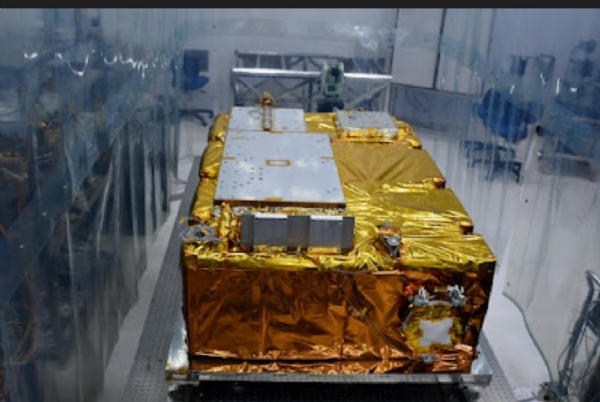Primary payload of Aditya-L1 handed over to ISRO, mission likely to be launched by July
ISRO chairman S. Somanath, speaking at the handover ceremony of the Visible Line Emission Coronagraph (VELC) payload on Thursday, said that the Aditya-L1 mission will be launched by June or July as the launch window for the mission would close by August.
Total Views |
Bengaluru, January 27: Indian Institute of Astrophysics (IIA) on Thursday handed over to ISRO, the Visible Line Emission Coronagraph (VELC), the primary payload on board Aditya-L1, which is India's first dedicated scientific mission to study the Sun, to be launched by June or July.

The Aditya-L1 mission will be launched by ISRO to the L1 orbit (which is the first Lagrangian point of the Sun-Earth system). L1 orbit allows Aditya-L1 to look at the Sun continuously. up with new and novel ideas for future space science instruments that have not been done before by others in the world.
IIA Director Prof. Annapurni Subramaniam, who released the official logo of the VELC payload, said “VELC is a team effort and is a major milestone for the institute. The effort has involved close collaboration between IIA, ISRO and many industries across India. We look forward to exciting science results coming from this payload after it is operational." The space solar mission was initially conceived as Aditya-1 with a 400 kg class satellite carrying one payload (VELC), and was planned to be launched in an 800 km low earth orbit.
The Principal Investigator of the VELC payload, Prof Raghavendra Prasad explained that no other solar coronagraph in space has the ability to image the solar corona as close to the solar disk as VELC can. "It can image it as close as 1.05 times the solar radius. It can also do imaging, spectroscopy and polarimetry at the same time, and can take observations at a very high resolution (level of detail) and many times a second”, he said, adding that this capability will revolutionise solar astronomy around the world and the data is expected to answer many outstanding problems in the field.
The handing over ceremony was held in the presence of the ISRO Chairman S Somanath at the Centre for Research and Education in Science and Technology (CREST) campus of IIA near here. ISRO will now conduct further testing of VELC and its eventual integration with the Aditya-L1 spacecraft, it said in a release.
In total Aditya-L1 has seven payloads, of which the primary payload is the Visible Emission Line Coronagraph (VELC), designed and fabricated by the Indian Institute of Astrophysics, Bengaluru. These seven payloads helps to observe the photosphere, chromosphere and the outermost layers of the Sun (the corona) will provide greater advantage of observing the solar activities and its effect on space weather.
ISRO chairman S. Somanath, speaking at the handover ceremony of the Visible Line Emission Coronagraph (VELC) payload on Thursday, said that the Aditya-L1 mission will be launched by June or July as the launch window for the mission would close by August.
The Aditya-L1 mission will be launched by ISRO to the L1 orbit (which is the first Lagrangian point of the Sun-Earth system). L1 orbit allows Aditya-L1 to look at the Sun continuously. up with new and novel ideas for future space science instruments that have not been done before by others in the world.
He said, "Understanding the effect of the Sun on Earth and its surroundings has become very important now and Aditya-L1 aims to shed light on this topic. It has taken 15 years for VELC from concept to completion, and this period was needed for a complex system like this. The VELC has been the finest collaboration between IIA and ISRO" Aditya L1 is the first space-based Indian mission to study the Sun from a halo orbit around the Lagrangian point 1 (L 1) of the Sun-Earth system.
Also Read | ISRO planning multiple missions in 2022 including Aditya-L1 and third lunar mission: Jitendra Singh
IIA Director Prof. Annapurni Subramaniam, who released the official logo of the VELC payload, said “VELC is a team effort and is a major milestone for the institute. The effort has involved close collaboration between IIA, ISRO and many industries across India. We look forward to exciting science results coming from this payload after it is operational." The space solar mission was initially conceived as Aditya-1 with a 400 kg class satellite carrying one payload (VELC), and was planned to be launched in an 800 km low earth orbit.
The Principal Investigator of the VELC payload, Prof Raghavendra Prasad explained that no other solar coronagraph in space has the ability to image the solar corona as close to the solar disk as VELC can. "It can image it as close as 1.05 times the solar radius. It can also do imaging, spectroscopy and polarimetry at the same time, and can take observations at a very high resolution (level of detail) and many times a second”, he said, adding that this capability will revolutionise solar astronomy around the world and the data is expected to answer many outstanding problems in the field.

